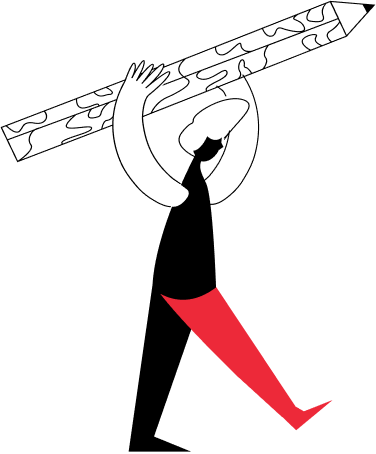The Ultimate Guide to Optimizing Product Pages for SEO
In 2025, ecommerce product page SEO is essential. With rising ad costs and ever-more sophisticated shoppers, tailoring each product page for organic search has become a powerful lever for growth. Optimized pages win more traffic, higher visibility, improved conversions, and ultimately provide major ROI. This guide will guide you through every step of the process- from keyword research and meta tags to images, schema markup, reviews and common pitfalls, so you can turn your product pages into SEO powerhouses.
Investing in product page SEO ensures your listings stand out in crowded SERPs. It not only enhances discoverability but also improves user experience keeping shoppers engaged and more likely to convert.
Why Ecommerce Product Page SEO Matters for Sites
The following is why optimizing your ecommerce product pages is essential for driving traffic and increasing sales.
• User Intent & Discovery of Product- Users looking for information on specific products are closer to purchase. Ranking well means you get discovered at the right moment .
• Organic Traffic vs. Paid Ads- Organic traffic is less expensive in the long run and Google reserves top spots for credible and SEO-optimized pages.
• Increased Conversion Rates-Visibility in the search engines allows you to reach customers who are ready to purchase.
• Product Page Traffic Stats- Optimized pages receive 30 to 50% more traffic and 2–3× higher conversion rates than nonoptimized pages.
Optimizing your product pages for SEO is a continuous process; one that pays dividends in customer engagement, search visibility and bottom line growth . Take action now, and your ecommerce site will be ready for the future.
Keyword research for product pages
Effective keyword research lays the foundation for high-ranking, high-converting product pages. In today’s competitive ecommerce environment using the right keywords for product descriptions SEO ensures your pages get discovered when and where it matters most—when consumers are ready to buy .
1. Utilize Tools: Begin with keyword research tools such as Google Keyword Planner, Ahrefs, Ubersuggest, and Semrush. These tools can reveal search volume, competition level, as well as keyword trends that are highly relevant to your niche. Look for keywords with high commercial intent rather than just informational ones.
2. Focus on Buyer Intent: Instead of broad terms like “wireless earbuds,” zero in on phrases like “best wireless earbuds under ₹2,000” or “buy wireless earbuds with mic.” These suggest that the searcher is close to making a purchase decision, giving you a better chance of converting clicks into sales.
3. Leverage Long-Tail Variations: Integrate variations of your target keywords such as “Bluetooth earbuds for gym,” “wireless earbuds with fast charging,” or “noise cancelling wireless earbuds.” These not only boost visibility for niche queries but also improve the product’s relevance across search engines.
4. Pro Tip: For better on-page SEO, ensure your primary keywords appear naturally in critical elements such as the H1 tag, meta title, image alt attributes, and headings. This makes your product description SEO-friendly without keyword stuffing, ultimately improving your ecommerce product page SEO performance.
Crafting SEO Friendly Product Titles & Meta Descriptions
To craft SEO friendly product titles and meta descriptions, you can:
• Titles: Use formats like “[Brand] [Product] – [Key Feature], [Size]” to include your primary keyword while maintaining readability.
• Meta Descriptions: Write enticing summaries with a clear call-to-action (e.g., “Order now” or “Free shipping”).
• Dynamic Variables: Use templated tags like Buy [Product] at Best Price and SKU: [ID] to scale without sacrificing relevance.
Writing Unique, Conversion-Driven Product Descriptions
Crafting original, engaging descriptions is key to ranking higher and converting browsers into buyers.
• Avoid Manufacturer Copy-Paste- Duplicate content lowers rankings.
• Use Skimmable Formats- Employ bullet points and short paragraphs for readability.
• Blend Features with Benefits- Highlight what problem the product solves, not just spec lists.
• Expert Tip- Add a short, relatable story or scenario to boost engagement and dwell time.
Image Optimization for SEO and Speed
Optimized images not only boost your SEO but also enhance user experience by speeding up load times. You must follow these tips-
• Naming Convention: Rename files descriptively (e.g., red-leather-wallet.jpg).
• Alt Attributes: Use descriptive alt text incorporating the keyword.
• Faster Format: Convert to WebP for quicker load times.
• Compression: Use tools like TinyPNG to compress files with minimal quality loss.
Internal Linking & Site Structure
A strong internal linking structure guides users and search engines, improving crawlability and product discoverability.
• Smart Linking: Link from category pages to product pages and vice versa to create a seamless browsing experience and improve internal authority flow.
• Breadcrumbs: Add hierarchical navigation to improve UX and crawlability, helping both users and search engines understand your site’s structure at a glance.
• Avoid Orphans: Ensure every product page is linked from somewhere on your site- homepages, categories, or blog posts, so they’re easily found and indexed.
• Silo Structure: Organize content into logical topic-based groups (e.g., electronics → headphones → wireless), making navigation intuitive and reinforcing keyword relevance for better rankings and a more structured SEO framework.
Implementing Schema Markup for Products
Schema markup for your ecommerce site helps your product pages stand out in search results with rich snippets that boost clicks and visibility.
• Use Rich Snippets: Schema types include Product, Review, Price, and Availability.
• Testing Tools: Use Google’s Rich Results Test or Schema.org validator.
• Benefits: Rich snippets improve visibility and click-through rates.
Mobile Optimization & Core Web Vitals
Optimizing for mobile and Core Web Vitals ensures faster load times, better user experience, and higher search rankings on all devices. It also reduces bounce rates and boosts engagement, which signals quality to search engines and can lead to improved visibility and conversions.
• Mobile-First Design: Google indexes mobile versions first, so ensure your product pages are fully responsive, with clear CTAs and easy navigation on smaller screens.
• Page Speed: Optimize scripts, remove render-blocking resources, compress images using WebP, and leverage CDNs like Cloudflare to deliver content faster across geographies.
• Core Web Vitals: Focus on Largest Contentful Paint (LCP), First Input Delay (FID), and Cumulative Layout Shift (CLS) to ensure smooth, responsive interactions.
• Tools: Google PageSpeed Insights, GTmetrix, and Lighthouse can help diagnose performance issues and provide actionable suggestions for improvement. Prioritizing mobile UX boosts rankings and sales.
Building Trust with Product Reviews and UGC
• Customer Reviews: Display verified user feedback prominently.
• Q&A Sections: Provide answers to common queries… or let users ask.
• UGC Images: Include real-life product photos from customers to enhance credibility.
Common SEO Mistakes on Product Pages & How to Fix Them
Avoiding common SEO pitfalls can significantly improve your product page visibility and conversion rates.
• Duplicate Content: Avoid using identical descriptions across products.
• Thin Content: Add value with specifics, stories, and use-cases.
• Poor URL Structure: Use descriptive, keyword-rich URLs like /wireless-earbuds-nosie-canceling.
• Mobile Ignorance: Ensure mobile usability, tap targets, and viewports.
• Missing Schema: Without structured data, your pages miss out on rich results.
To elevate your ecommerce strategy, consider integrating Opositive for on-page SEO scans and competitive keyword insights. Opositive’s real-time monitoring tools help identify opportunities and resolve SEO issues before they affect performance.
Conclusion
Mastering ecommerce product page SEO is crucial for standing out in today’s competitive digital era. Begin with keyword research, focusing on buyer-intent phrases that mirror how your customers actually search. Then, fine-tune your product titles and meta descriptions to not only reflect those keywords but also boost click-through rates with clear, compelling copy. Next, ensure your product descriptions are unique and engaging; go beyond dry specs by blending factual information with emotional appeal to encourage conversions. Do not overlook the technical side: optimized images, fast loading times, and mobile responsiveness are essential elements of SEO for product pages.
Implement schema markup for your ecommerce page and maintain a clean internal linking structure to enhance visibility in search engines and make your site easier to navigate. Finally, feature user-generated content and reviews to build trust and authenticity. To stay ahead, regularly update your product pages, test what works, and adapt based on performance data. When done right, these efforts not only improve rankings but also drive real revenue.
Start optimizing your product pages today and monitor results monthly, iterate, and watch your ecommerce ROI grow.
FAQs
What is the ideal word count for product description for SEO?
Aim for 200 to 300 words per listing to strike the perfect balance between detail and readability. This length allows you to create a product description for SEO that’s both informative and keyword-rich, while remaining easy to scan for users. Include key features, benefits, and unique selling points without overwhelming the reader.
Should I use the same keywords for all product pages?
No. Tailor keywords to each product to prevent cannibalization and keep content distinct.
How often should I update my product pages for SEO?
Refresh every 3–6 months or after new reviews, images, or price changes.
Do out-of-stock products hurt SEO?
Not necessarily, if handled properly. Use structured markup and update inventory status.
Is it necessary to have product videos on the page?
While not essential, videos enhance engagement and time on page, helping SEO and conversions.














